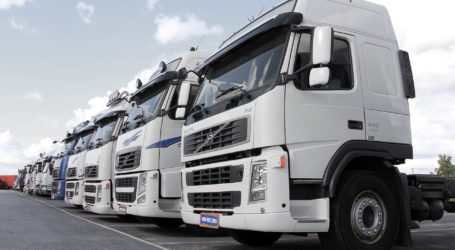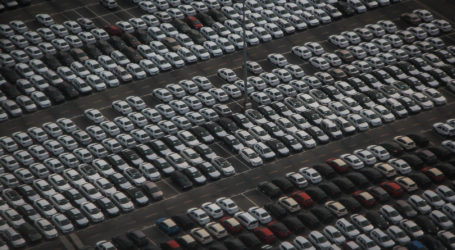Europe’s plan for alternative pipeline faces big problems
With its vast underground storage tanks and network of pipes, valves and tubes, Baumgarten in the flatlands east of Vienna is one of Europe’s biggest gas hubs. The first gas to cross the iron curtain was pumped through thousands of miles of pipelines from Siberia and into western Europe 40 years ago, arriving at Baumgarten for resupply across the continent. The hub remains the most important junction today, matching Russia’s huge mineral riches to Europe’s gargantuan appetite for natural gas. But a new energy revolution is being plotted.
With the Kremlin and the giant Russian gas monopoly, Gazprom, locked in their annual spat with Ukraine, the main transit country for Europe’s gas supplies, over prices and politics, Europe is desperately seeking ways to diminish its dependence on the 140bcm (billion cubic metres) of gas it currently imports from Russia. The most favoured, most ambitious and most contentious idea is to build a new pipeline beyond the grip of Gazprom, which controls 90,000 miles of gas delivery systems. Named after a Verdi opera, the Nabucco pipeline is supposed to terminate at Baumgarten, ultimately pumping 31bcm of Caspian gas through Turkey and the Balkans to Austria. “Diversification on the terrestrial route for gas is a must for Europe,” says Alexandr Vondra, deputy prime minister of the Czech Republic, which has taken on the EU presidency and sees energy policy as a priority.
The plan, born in 2002, is to thread almost 2,400 miles of pipeline through the narrow geostrategic stretch between Russia and Iran, the two countries with the world’s largest reserves of gas, to central Europe. “If we have a dominant company like Gazprom trying to influence all inroads of gas to Europe, we need to develop an alternative to the supply of gas from Russia,” says a senior European commission official involved in energy policy. Given the worsening fallout from the Russia-Ukraine dispute as well as the impact of last August’s Russia-Georgia war on Caspian energy security, the Europeans are trying to accelerate the Nabucco plans.
“We have good reason to believe that Nabucco will fly,” says Reinhard Mitschek, who manages the Nabucco consortium of six national energy companies from the 21st floor of an office block above the Danube in Vienna.
But the problems are formidable. European gas industry sources complain that EU officials are confusing political imperatives with economic, business and energy fundamentals. “This is an attempt at reverse engineering in pipeline development,” said a senior industry source. “Usually you find the resource and then you build a pipeline. With Nabucco it’s the other way round.”
Pierre Noël, energy analyst at the European Council on Foreign Relations, says: “This is a project that does not exist except in the minds of Brussels bureaucrats. They think you can build a pipeline and then the gas will flow. It’s simply not credible.”
Brussels has already spent millions on feasibility studies for a pipeline that will consume more than 2m tonnes of steel and comprise some 220,000 lengths of pipe from Turkey’s eastern border through Bulgaria, Romania, and Hungary into Baumgarten on Austria’s border with Slovakia.The cost is €8bn (£7.2bn) and rising. Construction was supposed to start last year, then this year, now next year.
Last summer Mitschek ordered a survey of gas shippers and said the results showed interest in pumping 16bcm through Nabucco, half the total capacity but ample to get the pipeline operating.
The industry source said there was nowhere near enough to make Nabucco viable. “The most important issue regarding this project is to obtain enough gas,” the Turkish president, Abdullah Gül, said last month. The first target for gas to fill the pipeline is Azerbaijan, whose Caspian field Shah Deniz II should come onstream around 2013, when Nabucco is due to start pumping. “This gas is expected from Azerbaijan,” says Mitschek of the 8bcm, or quarter of the pipeline’s capacity, needed to start Nabucco operations. But Gazprom is competing fiercely for the Azerbaijani prize in a bidding war with the Europeans, offering above- market prices for the gas while the Kremlin dangles the political carrot of arranging the return of the disputed enclave of Nagorno-Karabakh to Baku’s control.
“The Russians have offered a deal,” says Elmar Mammadyarov, Azerbaijan’s foreign minister. “But there are different options on the table. At the end of the story, it’s our gas.”
A recent western audit of Turkmenistan’s gas reserves cheered officials in Brussels by confirming a doubling of the known resources. But experts caution that it will be 20 years before sufficient Turkmen gas can be pumped for Europe to evade Gazprom’s control. Similar calculations apply to aims of filling Nabucco with gas from Iraq or Iran, were there to be major political change in Tehran. Compounding the problems is Turkey and its worsening relationship with the EU. Well over half the proposed pipeline is to be located in Turkey.
Brussels is attempting to negotiate an agreement making Turkey the main transit country for Caspian gas to Europe. The Turks are insisting on 15% of the gas at discounted prices, a demand that would wreck Nabucco financially, say officials in Brussels.










